Pictured: An ancient mural of an Indian couple
While this topic is mired in tons of presumption, the reality is, Ancient Indians saw people through the lens of civility and barbarism, much similar to Romans. We see throughout Indian literature an emphasis on Vedic orthodoxy and therefor ‘civility’ as a sign for superiority. This is seen in spite of ethnicity, color, or language.
Colonial-era Indology created implications of types of colorism or racism in Indian history that simply did not exist (in our modern lens). Many so called “historians” or commentators continue to purport these false assumptions, though they hardly stand true when really looking at Ancient Indian literature.
The Rig Veda Arya/Dasyu
Pictured: Our Aryans in question
The first instance where we see this assumption would probably be within the Rig Veda and the identity of the Arya & Dasyu, namely in the Soma Pavamana & Slokams related to Indra.
In this story, Indra & his followers are protected from Vritra & his associated Dasyus. Indra with the power of drinking Soma defeats them (hence the sacrifice of Soma to Indra).
Multiple slokams on Indra speak of his conflict with the demon Vritra who brings upon drought. Indra is the supposed freer of waters who bless the lands with water, wealth and abundance.
Of course this garnered a false twisted historical narrative namely among colonial “indologists”. The implication being that Dasyus is a term for some “native” population in India being defeated by “foreign Aryas” (twisting the narrative).
Pictured: Warriors and Rishis
The identity of the Dasyu is corrupted by either mistranslation, out of context verses, or just plain ignorance.
First off, the term Dasa could be taken to mean something similar to “servant” or even “slave”. The term isn’t always negative, celebrated rulers & warriors such as Divodasa mentioned in the Rig Veda, carry the term Dasa within their names for example, and plenty of Hindu texts use the term in relation to a deity or God, ie. A slave to God.
“[...] O Śiva, out of delusion. I too have committed offence against you since I took sides with Dakṣa and fought with Vīrabhadra, Thy attendant. O Sadāśiva, Thou art my master, the supreme Brahman. I am Thy slave (i.e., dāsa). I shall be sustained by Thee always since thou art the father unto us all”. -Sivapurana 7.42
Dasyu is actually a completely separate term, meaning “thief”. This is corroborated in later scripture such as the Brihat Samhita for example, where the term explicitly describes robbers.
“If Venus should see the eclipsed disc, crops will be injured and there will be drought and famine in the land and mankind will have fear from robbers (dasyu).”-Brihat Samhita
Some physical descriptions of a “Dasyu” within the Rig Veda itself are that they are noseless, handless, and footless. That is because the demon Vritra himself is a Dasyu.
The term anasa means "without nose" or "noseless." This description applies to the serpent race of Vedic mythology, as further designations of the Dasyus as "handless" and "footless" indicate. The Dasyus are usually a group of serpentlike demons, this epithet is also used as a metaphor for evil people
-In Search of the Cradle of Civilization: New Light on Ancient India : By Subhash Kak. David Frawley, 2001.
In this respect the term Dasyu is in reference to a mythological and not human character. For example there is a three headed Dasyu, again likely in reference to Vritra.
“The sovereign Indra attacking him overcame the loud shouting, six eyed, three headed Dasyu, Trita invigorated by his strength, smote the cloud with his iron-tipped finger.” -Rig Veda 10.99.6
Pictured: Indra fighting Vritra
A noseless, handless, and footless creature is not only of course a serpent, as Vritra is. Vritra himself is a giant serpent who envelops the sun and causes eclipses. He is called by the epithet “Ahi” meaning snake.
“You, Soma, who likens Indra to perform mighty acts, are the slayer of the Vṛtras, the destroyer of those who are called serpents; you are the slayer of every Dasyu.” -Rig Veda 9.88.4
Iranian Avestan literature also has similar association with a three headed serpent being called the Azi Dahaka. The term Azi means dragon or snake, meanwhile Dahaka (or Daha) etymologically in Iranian languages likely means “man” and is even possibly related to the term Dasyu.
Azi Dahaka (or Snake Man) is likely the Avesta equivalent of Vritra. Serpent slaying myths are, after all, a common theme in IE mythology.
Pictured: A Medieval Iranian depiction of Azi Dahaka
The Azi Dahaka lives in an inaccessible fortress. This also shares many similarities to the Rig Veda Vritra and the Dasyu. In the Rig Veda Indra destroys the mythological fortresses of Vritra.
Are the Dasyu in reference to a real human population?
The term Daha meaning man in Iranian languages is probably not a coincidence with the Vedic Dasyu. There was a real Iranian tribe known as the Dahae, but again multiple Iranian languages used Daha to refer to “man”. The association with Dasyu/Dahae to being robbers may have potentially carried a real historical basis.
One theme within the Rig Veda is the infamous Battle of Ten Kings. Within the Battle of Ten Kings, is not just mention of ruling clans in India such as the Matsyas or Yadavas, but in fact also ruling clans in Eastern Iran.
These are the Parsus (Persians), Pakhtas (Pakhtuns), or the Parni (also possibly Bhalanas, Alinas, Vishanins and Siva). The Parni are especially associated with the Iranian Dahae tribes. These clans are the enemies of the Bharata-Purus, the chief Aryans of the Vedas. Furthermore these Iranian clans are associated with Dasyus.
The major point of this theme is the victory of the Bharatas-Purus clan over the rest of the many kings. Their victory leads to the formation of the Kuru Kingdom of Ancient India. Indra of course is the celebrated God of the Bharatas who aids them in victory and the Vedas are credited in later literature to the Kurus.
One seemingly odd coincidence too is the Avestan/Vedic split. Within Iranian Avesta literature the term Deva (deity in Hinduism) carries negative connotation, whereas the term Asura (demon in Hinduism) carries a positive connotation. More bizzare is the fact that Indra is a demon in Avesta literature.
Did the conflict between the Vedic Aryas & ‘Iranian Dasyus’ carry some religious division? Its possible. It really is a glaring oddity that the pantheons flipped. There truly might have been some real enmity there. The Dahae for example are also mentioned in the Yashts as one of the five principal Zoroastrian tribes.
Later literature such as the Mahabharata explicitly labels Iranians and Iranian adjacent tribes as Dasyus.
“Shantiparvan of Mahabharata groups the Chinas with the tribes of the Uttarapatha (of the North): the Yavanas(Greeks), Kiratas (of Tibet), Gandharas(of Afghanistan), Shabras(of the Himalayas), Barbaras, Shakas(Scythians), Tusharas(Tocharians), Kanakas, Pahalavas(Persians), Sindhus(Sindhis), Madrakas(Punjabis), Ramathas, and the Kambojas(Iranians) and states them to be living the lives of Dasyus (thieves).”- MBH 12.65.13-15
Pictured: A fragment showing a couple from Gandhara, one of the tribes living as “Dasyus”.
To add to the idea that Dasyus were Iranian though, another reference of the Buddha converting Dasyus is seen here:
“The Bhaiṣajyavastu (from the Mūlasarvāstivādavinaya) describes a story of Buddha teaching his dharma to the Four Heavenly Kings (Catvāraḥ Mahārājāḥ) of the four directions. In this story, the guardians of the east (Dhṛtarāṣṭra) and the south (Virūḍhaka) are āryajatiya (āryas) who speak Sanskrit, while the guardians of the west (Virūpākṣa) and the north (Vaiśravaṇa) are dasyujatiya (Dasyus) who speak Dasyu languages. In order to teach his Dharma, Buddha has to deliver his discourse in Aryan and Dasyu languages. This story describes Buddha teaching his Dharma to the āryas and Dasyus alike.”
Again Iranian tribes lived in the North/West are associated with the Dasyu guardians. Funnily enough, those tribes were also common early converts to Buddhism as well. Maybe this story is a reflection of that.
Nonetheless, Dasyu does not refer to any kings or kingdoms of India itself. Furthermore later Janapadas & Clans of India have clear mention of their ancestry in later literature. All of whom claim descent from Vedic clans.
The kingdoms & clans of Rig-Vedic India saw themselves as related despite warring with each other, as many were Vedic-Sanskrit speaking tribes. They all claim common descent from Manu.
Meanwhile the Iranian clans were not considered descendants of Manu.
Pictured: Early Vedic ruling clans & Iranian polities
The clans descended from Manu are chiefly the Bharatas/Purus/Matsyas, but also namely Yadus, Anus, Druhyus, and Turvasu.
The meaning of “Aryan” & “people of Bharat”
The term Arya primarily means “noble” in Ancient Indian literature. It was originally a label for people in the region of the Kuru Kingdom (Madhyadesh), referring to the Bharatas-Purus who formulated the Vedas (which the Kuru dynasty claimed direct descent from).
Some (declare) the country between the (rivers) Yamuna and Ganges (to be the Aryavarta). - from the earlier Baudhyana Dharmashastra
“Arya” beyond that, is also usually used in respect to learned masters, gurus, priests and of course deities in both Hinduism and Buddhism. It by and large meant “civilized” as opposed to uncivilized “mlecchas”, or barbarians.
Human beings are of two kinds- the civilized (Arya), and the barbarous (Mleccha). -Tattvartha Sutra 3.36
Pictured: The Kuru Empire, in dark green is the Kuru capital in Madhyadesh
Aryavarta (realm of the Aryas), later referred to much of India. Likely because of the spread of the Vedas from its origin in the Saraswati. As the following of the Vedas were, to the ancient Indians, the marker of civility.
But the region where the spotted deer roams by nature is to be known as the 'land fit for the Vedas' & where Aryans dwell; beyond that is the 'land of the Mecchas. -from the later Manusmriti 2.23
Where the spotted deer (Chittal) roams. Note: Bengal used to once be home to the Chital as well.
“The Panchalas observe the duties enjoined in the Vedas; the Kauravas observe truth; the Matsyas and the Surasenas perform sacrifices (all four are clans of Madhyadesha), the Easterners follow the practices of sinners ; the Southerners are fallen; the Vahikas (North-Western Tribes) are thieves; the Saurashtras (of Gujarat) are bastards.” -Mahabharata, Book 8, Chapter 45
Both the Vedas and Mahabharata are actually full of self appraisal of the Bharatas & later the Kurus and many kingdoms of Madhyadesh, as they were the originators and homeland of the Vedas. Often they are seen as the most refined in spirituality and culture.
Pictured: A learned teacher or Brahmin
The Mahabharata is also written from the perspective of the Kuru Kingdom and its secession struggle. It speaks ill on the religiosity of almost every other Janapada in India except for the Kurus and their immediate core neighbors such as the Panchalas or Saurasenas.
“The Kauravas with the Pancalas, the Salwas, the Matsyas, the Naimishas (forest people), the Koshalas, the Kasapaundras, the Kalingas, the Magadhas, and the Cedis who are all highly blessed, know what the eternal religion is.” -MHB 18:45
Janapadas situated outside of Madhyadesh are all typically characterized as places without the ritual refinement of the Kurus. The Kurus are also esteemed as great conquerers of India during the Mahabharata period, laying credence to the idea that the Vedic orthodoxy was probably primarily spread by the Kurus themselves.
“What duties should be performed by the Yavanas (Greeks), the Kiratas (Himalayans), the Gandharans (Afghanistan), the Chinas (Chinese), the Savaras(Sindhis), the Barbaras, the Sakas (Scythians), the Tusharas (Tocharians), the Kankas (of the Konkan Coast), the Pathavas, the Andhras (of South India), the Madrakas (of Punjab), the Paundras (of Bengal), the Pulindas(Central India), the Ramathas, the Kambojas (of Iran) or the several varnas that have sprung up from Brahmanas and Kshatriyas, the Vaishyas, and the Shudras, that reside in the dominions of kings?.
They were later given the status of Shudras (sinners). It is in consequence of the absence of Brahmanas from among them that the Sakas, the Yavanas, the Kambojas and other Kshatriya (warrior) tribes are degraded into the status of Shudras (sinners). The Dravidas (of South India), the Kalingas(of Odisha), the Pulanda, the Usinaras (of Northern India), the Kolisarpas, the Mahishakas (of South India) and other Kshatriyas (warriors), have, in consequence of the absence of Brahmanas from among their midst, become degraded into Shudras (sinners)” -MHB 13:33
In this quote we can see that the Kurus look at other Kshatriya (warrior) kingdoms/tribes disapprovingly for not following the Vedic rituals. Calling them sinners (Shudra) as a result.
Yet despite this the Mahabharata reiterates that these Janapadas are all related in lineage (besides the Mlecchas beyond the pale of India).
All Janapadas claimed descent from Vedic clans and dynasties. Many Janapadas were literally descended from Bharata-Purus themselves. Those of Eastern/Southern India, tended to claim descent from Bharata-Purus just as the Kurus did. Janapadas in Western/South Western India often claimed descent from Yadavas, Meanwhile in North Western India (along the Indus) the Anus and Druhyu.
These Vedic Clans were related through Manu, the progenitor of these various clans, and the chief patriarch of all people of Bharat (India). From Manu came King Aila, and from King Aila came King Yayati.
From Yayati came his 5 sons, Yadu, Turvasu, Druhyu, Anu, and Puru. These are where the various Vedic Aryan clans get their names. The Bharatas (king Bharat) descended from Puru. King Sudas, the glorified king of the Rig Veda and unifier of the Bharata-Puru tribes was a descendant of Bharata. Thus, the Bharatas are the chief “Aryans” of the Rig Veda.
The Bharata-Purus laid the foundation for the Kuru Kingdom (under King Parikshit), meanwhile other dynastic lines of the Bharatas spread East and South East (Iksvaku, Bali).
On the contrary the separate Yadus spread West and South West with various new dynastic lines being founded.
The land of the Indian sub-continent was named after Bharat as King Bharat was looked upon as a righteous ruler within the Vedas and Mahabharata. The central theme of the Bharatas in the Vedas and widespread following of the Vedas, in India likely lead to the adoption of Bharata as a name for Indian civilization.
“The country that lies north of the ocean and south of the snowy mountains is called Bhāratam there dwell the descendants of Bharata. (The Aryas)”—Vishnu Purana (2.3.1)
Pictured: “Bharat” in Mahabharata-era India
“I will now will you, O you of Bharata’s kin, of the tract of land known by Bharata’s name. This land is the beloved one of Indra…
After this, listen to the names of the provinces (of Bharat) as I mention them. They are the Kuru-Pancalas, the Salvas, the Madreyas, the Jangalas, the Surasena, the Kalingas, the Vodhas, the Malas, the Matsyas, the Sauvalyas, the Kuntalas, the Kasi-kosalas, the Cedis, the Karushas, the Bhojas, the Sindhus, the Pulindakas, the Uttamas, the Dasarnas, the Mekalas, the Utkalas; the Pancalas, the Kausijas, the Nikarprishthas, Dhurandharas; the Sodhas, the Madrabhujingas, the Kasis, and the further-Kasis; the Jatharas, the Kukuras, O Bharata; the Kuntis, the Avantis, and the further-Kuntis; the Gomantas, the Mandakas, the Shandas, the Vidarbhas, the Rupavahikas; the Asvakas, the Pansurashtras, the Goparashtras, and the Karityas; the Adhirjayas, the Kuladyas, the Mallarashtras, the Keralas, the Varatrasyas, the Apavahas, the Cakras, the Vakratapas, the Sakas; the Videhas, the Magadhas, the Swakshas, the Malayas, the Vijayas, the Angas, the Vangas, the Kalingas, the Yakrillomans; the Mallas, the Suddellas, the Pranradas, the Mahikas, the Sasikas; the Valhikas, the Vatadhanas, the Abhiras, the Kalajoshakas; the Aparantas, the Parantas, the Pahnabhas, the Carmamandalas; the Atavisikharas, the Mahabhutas, O sire; the Upavrittas, the Anupavrittas, the Surashatras, Kekayas; the Kutas, the Maheyas, the Kakshas, the Samudranishkutas; the Andhras, and, O king, many hilly tribes, and many tribes residing on lands laying at the foot of the hills, and the Angamalajas, and the Manavanjakas; the Pravisheyas, and the Bhargavas, O king; the Pundras, the Bhargas, the Kiratas, the Sudeshnas, and the Yamunas, the Shakyas, the Nishadhas, the Anartas, the Nairitas, the Durgalas, the Pratimasyas, the Kuntalas, and the Kusalas; the Tiragrahas, the Ijakas, the Kanyakagunas, the Tilabharas, the Samiras, the Madhumattas, the Sukandakas; the Kasmiras, the Sindhusauviras, the Gandharvas, and the Darsakas; the Abhisaras, the Utulas, the Saivalas, and the Valhikas; the Darvis, the Vanavadarvas, the Vatagas, the Amarathas, and the Uragas; the Vahuvadhas, the Kauravyas, the Sudamanas, the Sumalikas; the Vadhras, the Karishakas, the Kalindas, and the Upatyakas; the Vatayanas, the Romanas, and the Kusavindas; the Kacchas, the Gopalkacchas, the Kuruvarnakas; the Kiratas, the Varvasas, the Siddhas, the Vaidehas, and the Tamraliptas; the Aundras, the Paundras, the Saisikatas, and the Parvatiyas, O sire.
There are other kingdoms, O bull of Bharata’s race, in the south. They are the Dravidas, the Keralas, the Pracyas, the Mushikas, and the Vanavashikas; the Karanatakas, the Mahishakas, the Vikalpas, and also the Mushakas; the Jhillikas, the Kuntalas, the Saunridas, and the Nalakananas; the Kankutakas, the Colas, and the Malavayakas; the Samangas, the Kanakas, the Kukkuras, and the Angara-marishas; the Samangas, the Karakas, the Kukuras, the Angaras, the Marishas: the Dhvajinis, the Utsavas, the Sanketas, the Trigartas, and the Salvasena; the Vakas, the Kokarakas, the Pashtris, and the Lamavegavasas; the Vindhyaculakas, the Pulindas, and the Valkalas; the Malavas, the Vallavas, the further-Vallavas, the Kulindas, the Kalavas, the Kuntaukas, and the Karatas; the Mrishakas, the Tanavalas, the Saniyas; the Alidas, the Pasivatas, the Tanayas, and the Sulanyas; the Rishikas, the Vidarbhas, the Kakas, the Tanganas, and the further-Tanganas.”
Pictured: A mural of a royal court in the Deccan
Identity of the Mleccha
Pictured: An Indian mural depicting foreign Iranians. They are differentiated from Indians by their appearance and clothing.
Within the Mahabharata foreign peoples were usually referred to as Mleccha. Mleccha generally meant barbarian or unintelligible. This honestly was usually a pejorative word.
“The mlecchas are the dirt of mankind” -MHB 8.45
“Śūdras, Mlecchas all bereft of Vedic culture and way of life—will be the rulers over the banks of the Sindhu and the Candrabhāgā(the Chinab), the city of Kaunti and the region of Kashmir.”- Bhagavata Purana 12.1.39 (in speaking of the Kali Yuga)
Typically Mleccha was used in reference to many of India’s various North Western neighbors who often invaded the Indus, such as Iranians, Greeks, or Scythians.
Pictured: Tocharian artwork from Bactria, (neighboring India in Afghanistan)
“Among the tribes of the north are the Mlecchas, and the Kruras; the Yavanas, the Cinas, the Kambojas, the Darunas, and many Mleccha tribes; the Sukritvahas, the Kulatthas, the Hunas, and the Parasikas; the Ramanas, and the Dasamalikas.”
“Then again there are the Sudra-abhiras (sheperds who do not follow the Vedic religion), the Dardas (Dardic people), the Kasmiras (Kashmiris), and the Pattis; the Khasiras; the Atreyas, the Bharadvajas, the Stanaposhikas, the Poshakas, the Kalingas, and diverse tribes of Kiratas; the Tomaras, the Hansamargas, and the Karamanjakas. These and other kingdoms are on the east and on the north. O lord, alluding to them briefly I have told you all.“
(On Mlecchas) “They are without the Veda and without knowledge, without sacrifice and without the power to assist at other's sacrifices. They are all fallen and many amongst them have been born of Shudras (sinners) upon other peoples' girls (kidnapping women of other tribes). The gods never accept any gifts from them. The Prasthalas, the Madras, the Gandharas, the Arattas, those called Khasas, the Vasatis, the Sindhus and the Sauviras are almost as blamable in their practices.!'”
Pictured: Fragments of Gandharan/Bactrian Art
Being “unrighteous barbarians” probably gave them the synonym of the name “Dasyu” or thief, as these Mleccha tribes often raided North-Western India. They also were known to “kidnap women”.
Furthermore, much like how Romans enslaved foreigners, so too did Indians. Or at least they bought them as slaves.
Mlecchas were deemed legally able to be enslaved. This also likely gave them the name “Dasa” as synonym. Dasa, Dasyu, & Mleccha were all terms for non-Aryas.
If one puts up for sale a Sudra who is a minor or who is the very life of an Arya, one shall be fined 12 Panas; one who puts up a Vaisya, 24 Panas; a Ksatriya, 36 Panas; a Brahmana, 48 Panas.
This applies to cases where the boy is put up by his own relatives. If it is done by strangers, the penalty shall be the three kinds of Death; also for the buyers and those who witness the transaction. For the Mlecchas there is no offence, if they sell or pledge their offspring; but an Arya can never be a slave. - Arthasastra (p. 80)
It should be noted that non-sanskrit speaking societies that adopted/followed the Vedas (& thus at least used Sanskrit as a lingua franca or liturgical/academic language) weren’t considered Mleccha or barbarous.
The kingdoms of Southern India or even SE Asia (also known as Suvarnabhumi or “the Golden Land”.) were often not Sanskrit speaking, yet knew Sanskrit or were acculturated to it through following Hinduism. Many SE Asian societies also claimed descent from the Bharatas, through the dynastic lines of King Bali. Furthermore Scythians in NW India by and large began following Hinduism much later in history.
Skin Color in Ancient India
Ancient Indian writers usually saw people in terms of civility and their adherence to the Vedas. This does not mean they were blind to skin color though, they knew people looked different obviously. Mleccha societies were often much lighter skinned than Indians in appearance (Greeks, Persians, Scythians, etc). They were also noted for being different looking (crooked faced with fierce eyes, as per the Mahabharata).
Meanwhile Indian societies were seen as somewhat diverse in color.
“The Rājaśekhara gives the description of colour of people residing in the different regions [of Bharat], which are also helpful to the poet. The colour of people living in east is śyāma and the people of southern regions are kṛṣṇa. Western regions peoples are pāṇḍu and the people residing in the north are Gaura. Beside those the people of Madhya-deśa (Home of the Vedas) are a mixture of kṛṣṇa, shyām and Gaura colours. Rājaśekhara’s this type of characterization of colour is generally accepted by most of the kavi (poets).”
Pictured: “Golden” skin tones
The terms Gaura or Pandu here mean yellowish(tan), golden, or relatively lighter.
Pictured: “Shyam” skin tones
The terms Shyam or Krishna mean brown, black, or relatively darker skinned.
Notable figures such as Rama, ruler of the Kosala Janapada (in Madhyadesh), and an esteemed Arya, was mentioned to be of a Shyam complexion.
Pictured: Lord Ram of Ayodhya
Arjuna the chief protagonist of the Mahabharata and a Kshatriya prince of the Kuru Kingdom was esteemed as being of a dark complexion and handsome.
“Affectionately, my father gave me my tenth name of Krishna (black), since the child had a dark complexion.” -Goharana parva, Mahabharata.
His step brother Nakula was named so for being brown like a Mongoose. There was no antipathy towards color here. Mind you the Kuru Kingdom was the chief Vedic kingdom, and center of Vedic culture in Northern India.
Meanwhile his other brothers such as Bheema or Yudhishthira are esteemed as being of a Gaura complexion in the Mahabharata.
As you can see the ruling classes of the Kuru were quite diverse in complexion, seemingly fitting for being in Madhyadesh given the quote in the Rajashekhara.
Siddhartha Gautama (aka the Buddha) and Prince of the Shakyas (a feudatory ruled by Kosala), was noted to be of a complexion like that of a jujubee fruit with big black eyes like a cow.
Pictured: Ancient Indian murals of the Buddha. Notice his big black eyes, and his skin color akin to that of a jujube fruit.
Empress Draupadi of the royal Panchalas (neighbors & allies of the Kurus) was described as a beautiful woman of a dark complexion.
"The fire-born woman was extremely beautiful. Her eyes were black and large as lotus-petals, her complexion was dark, and her locks were black and curly. Her nails were beautifully convex and bright as burnished copper; her eyebrows were fair, and her breasts were deep. Indeed, she resembled the veritable daughter of a celestial born among men. Her body gave out fragrance like that of a blue lotus, perceivable from a distance of full two miles. Her beauty was such that she had no equal on earth. Like a celestial herself, she could be desired (in marriage) by a celestial, a Danava, or a Yaksha” -Mahabharata. Adi Parva. Chapter 169:3
Pictured: A mural of a dark-hued queen
Plenty of Hindu deities are associated with light or dark tones or both. Shiva is described as white (Karpura Gaura) but also as Babhru (brown). Vishnu is black (Shyam), as is Krishna. Parvati is known as Gauri (golden one) but her form of Kali is Shyam.
Pictured: A white & a brown Shiva
It should be noted that the term Shyam or Nila could also mean blue, that is because ‘blue’ was historically seen as a shade of black in Ancient India. You will see for example Vishnu or Krishna also being depicted as blue. This is why there are so many blue gods in Hinduism. Likewise the Buddha’s hair & eyes being described as Nila, lead to later depictions of them being blue as well (and his skin being depicted as literal gold).
Pictured: A blue hair/eyed Buddha and a blue skinned Vishnu.
Of course people would twist or suggest this to mean the Buddha was a blue eyed individual from somewhere other than Lumbini. But it’s simply not true.
Despite the common lies, there really is no scriptural nor artistic displays of colorism seen from Ancient India as a whole.
You might often hear the lie that “dark skin was looked down upon because aristocrats stayed inside and peasants labored outside” but again not even this nonsense is supported at all, especially not in any scripture. Its simply a modern myth.
Many ancient Indian aristocrats were often dark skinned themselves and peasants & barbarians of Ancient India were equally diverse in color. Kings gladly depicted themselves as dark-skinned cause, well they often were. And they weren’t insecure about it. Like I mentioned at the beginning of this post, Ancient India saw skin color much the same as Rome did. As in, they hardly cared that deeply for it.

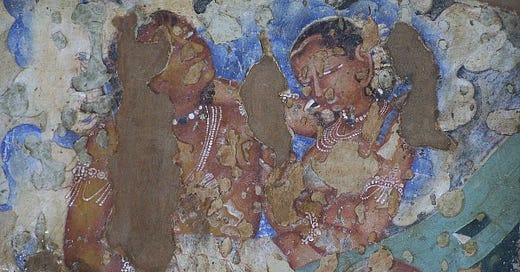



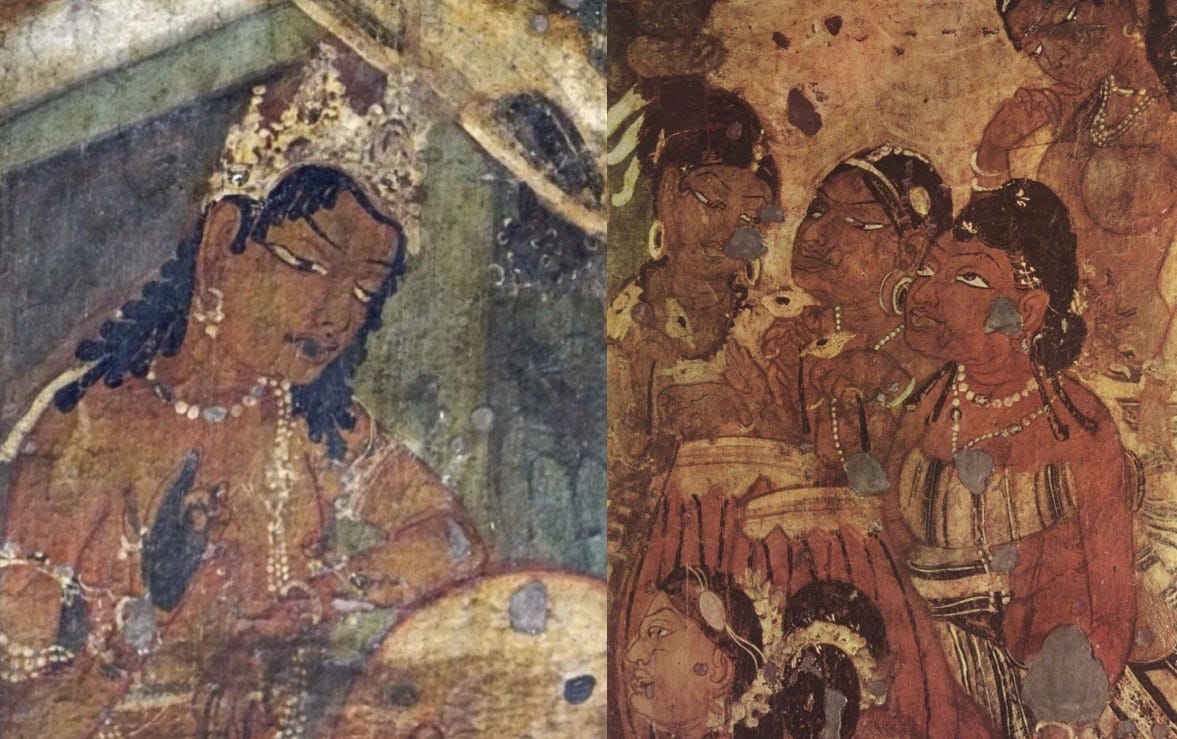
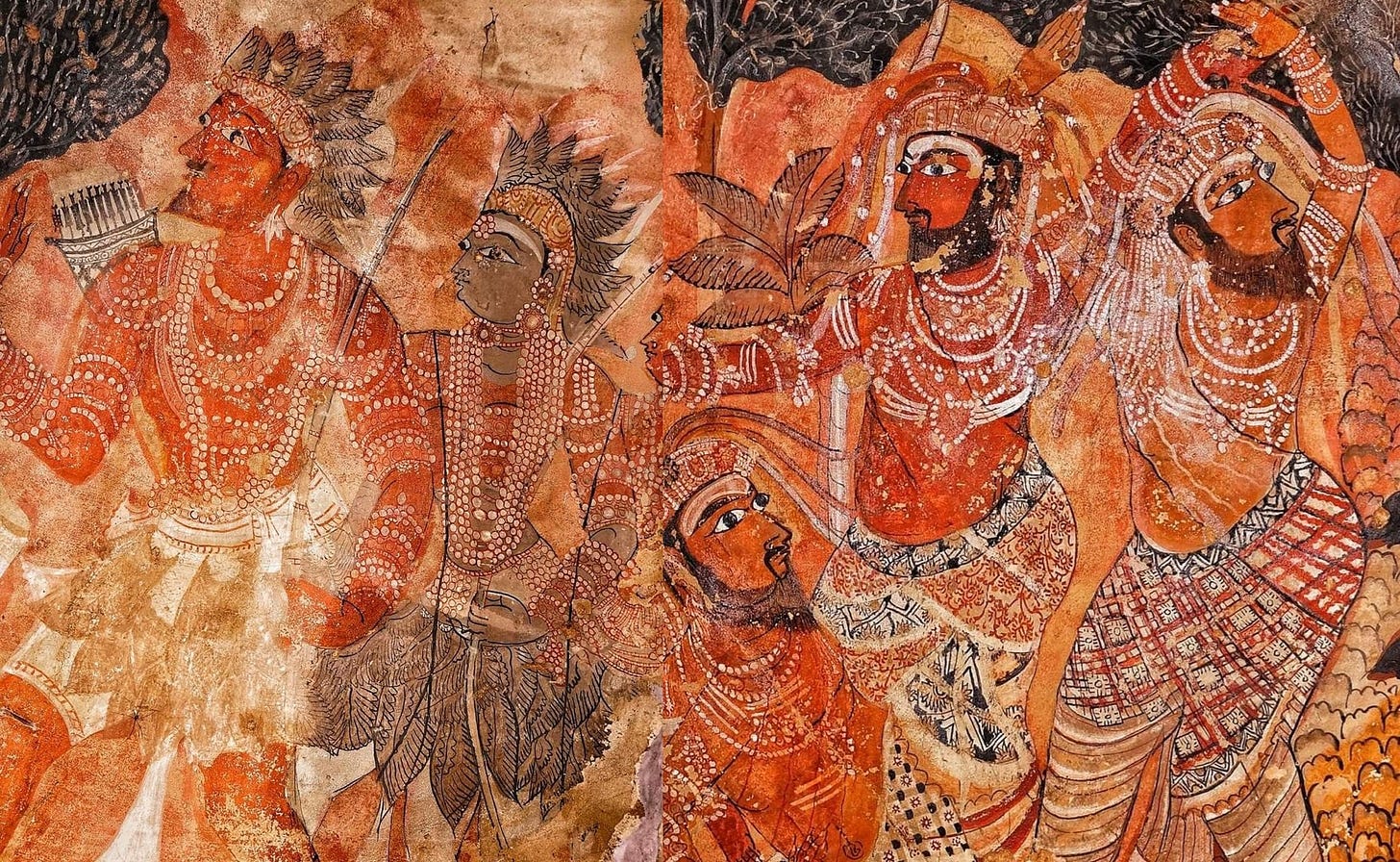
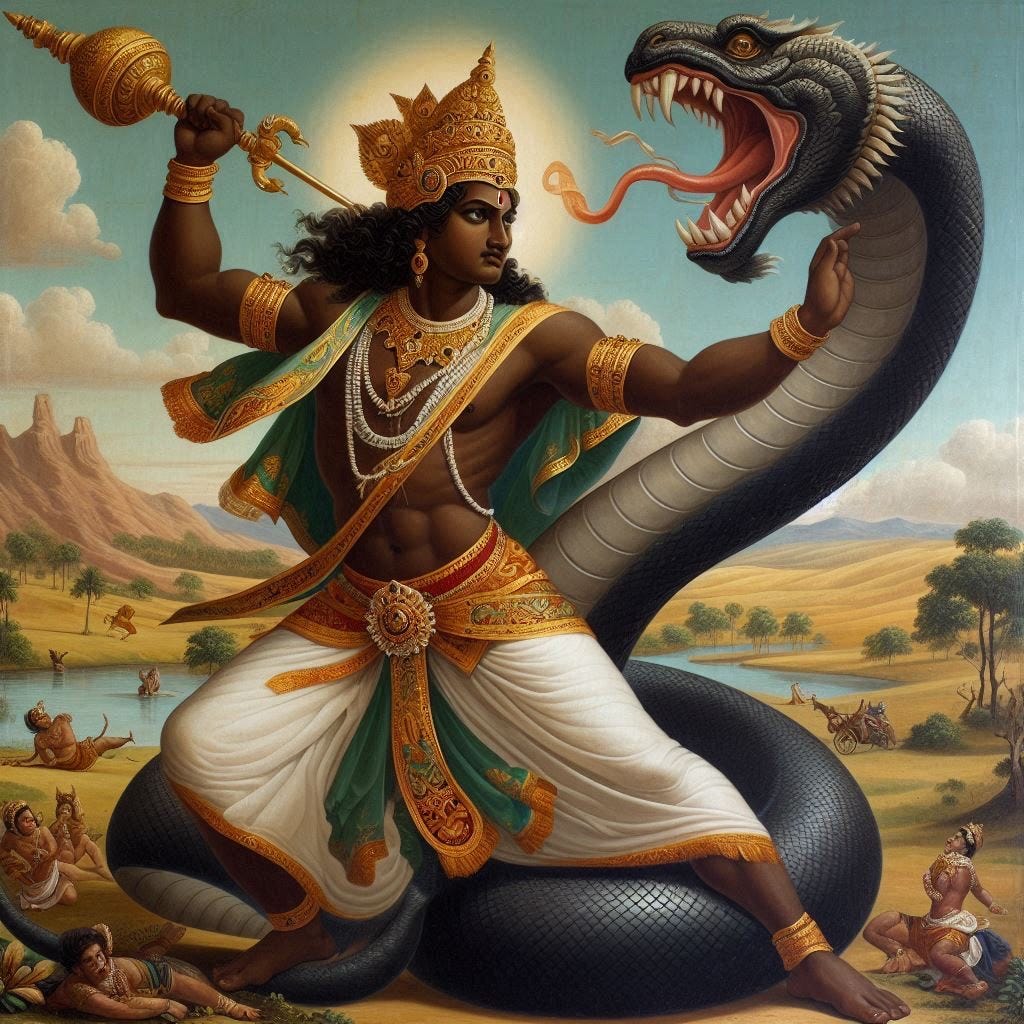
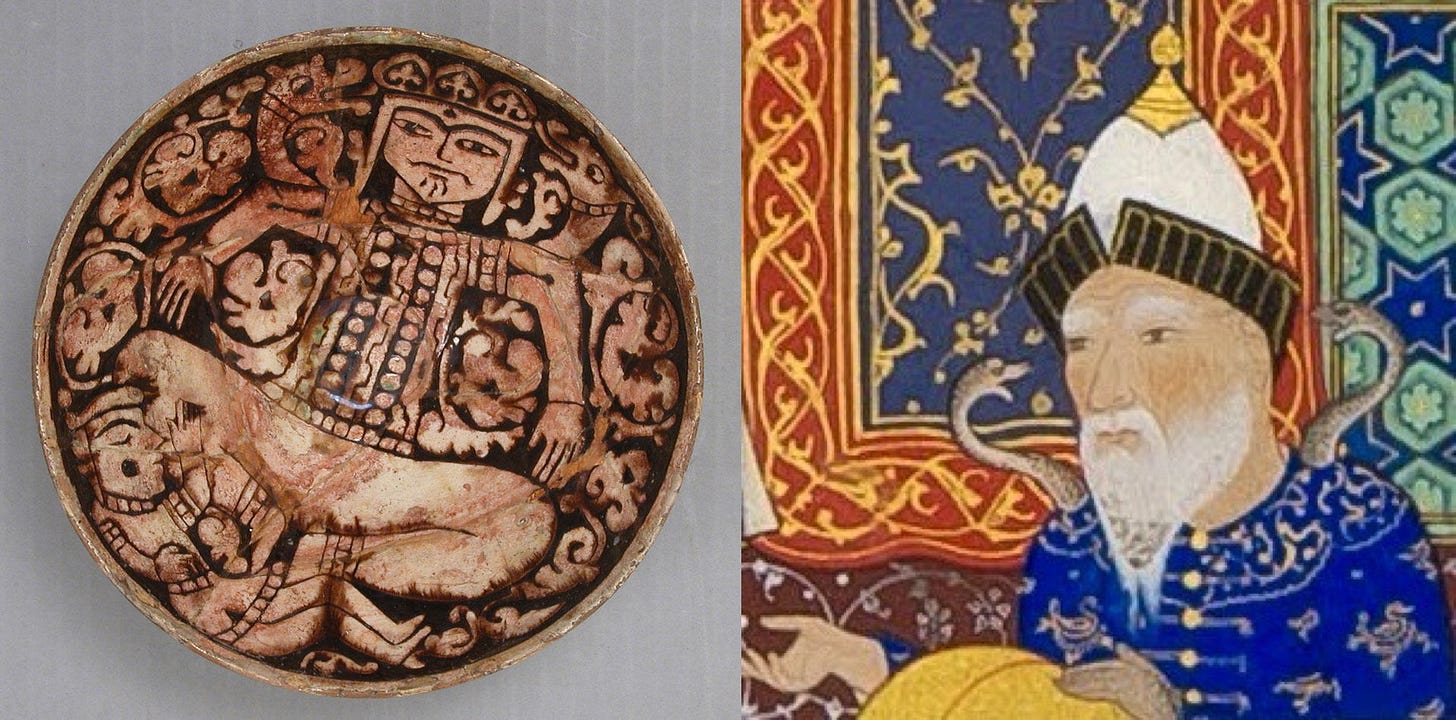

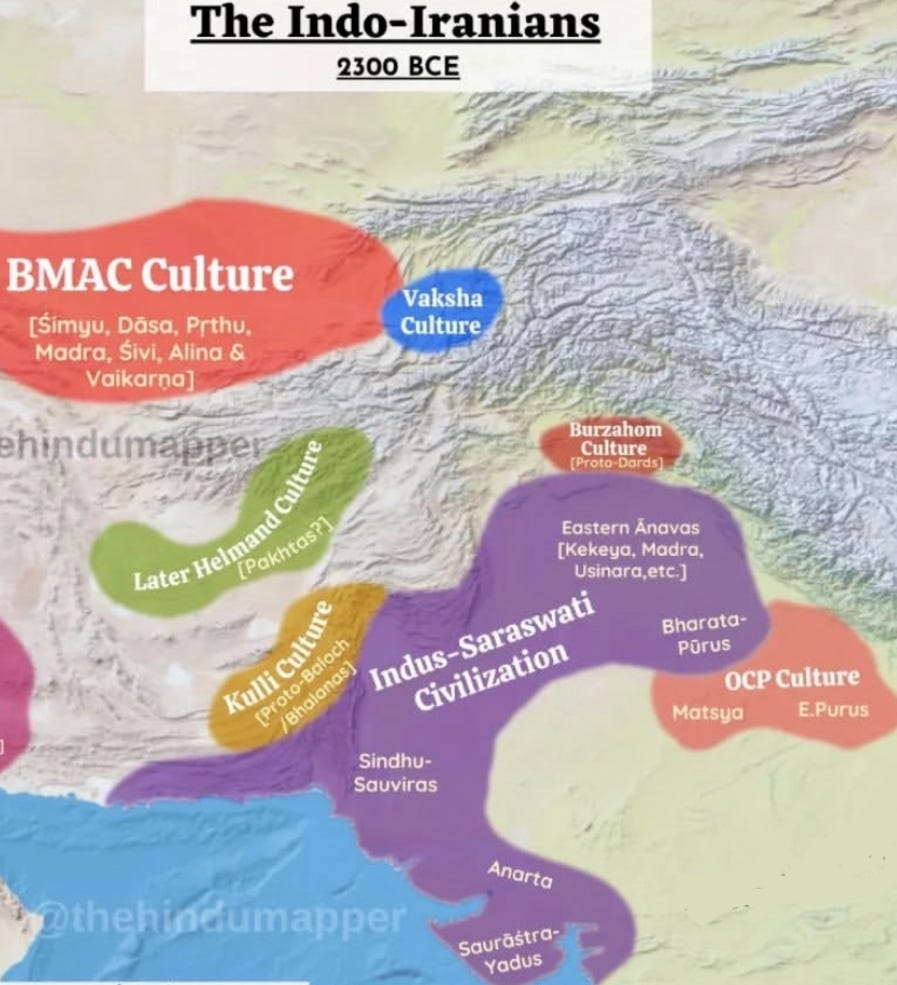
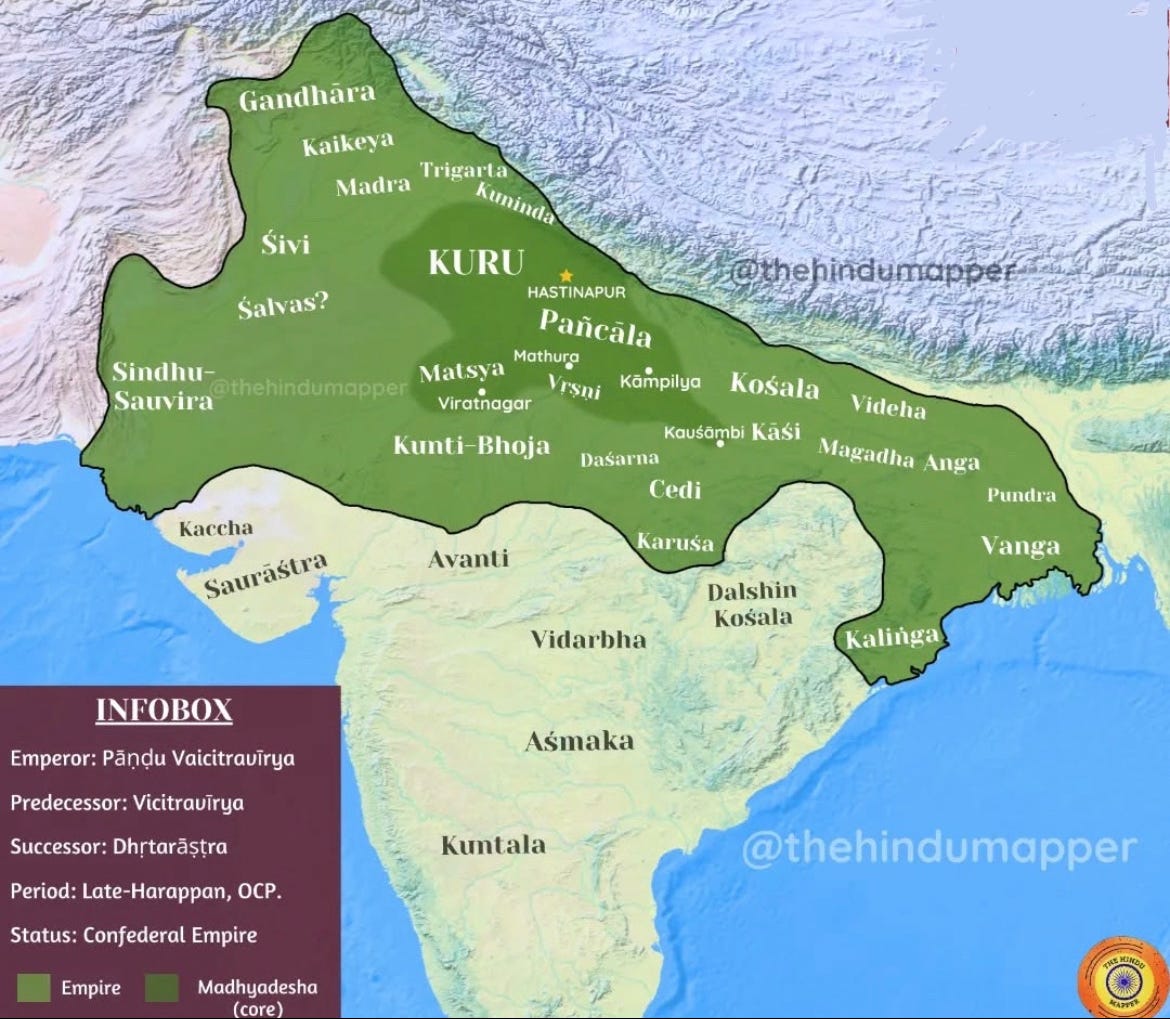
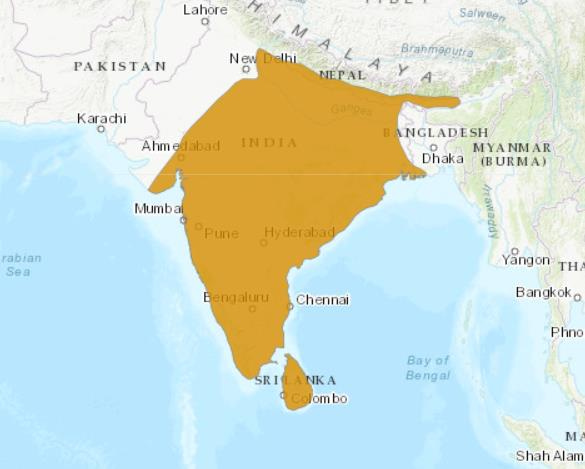
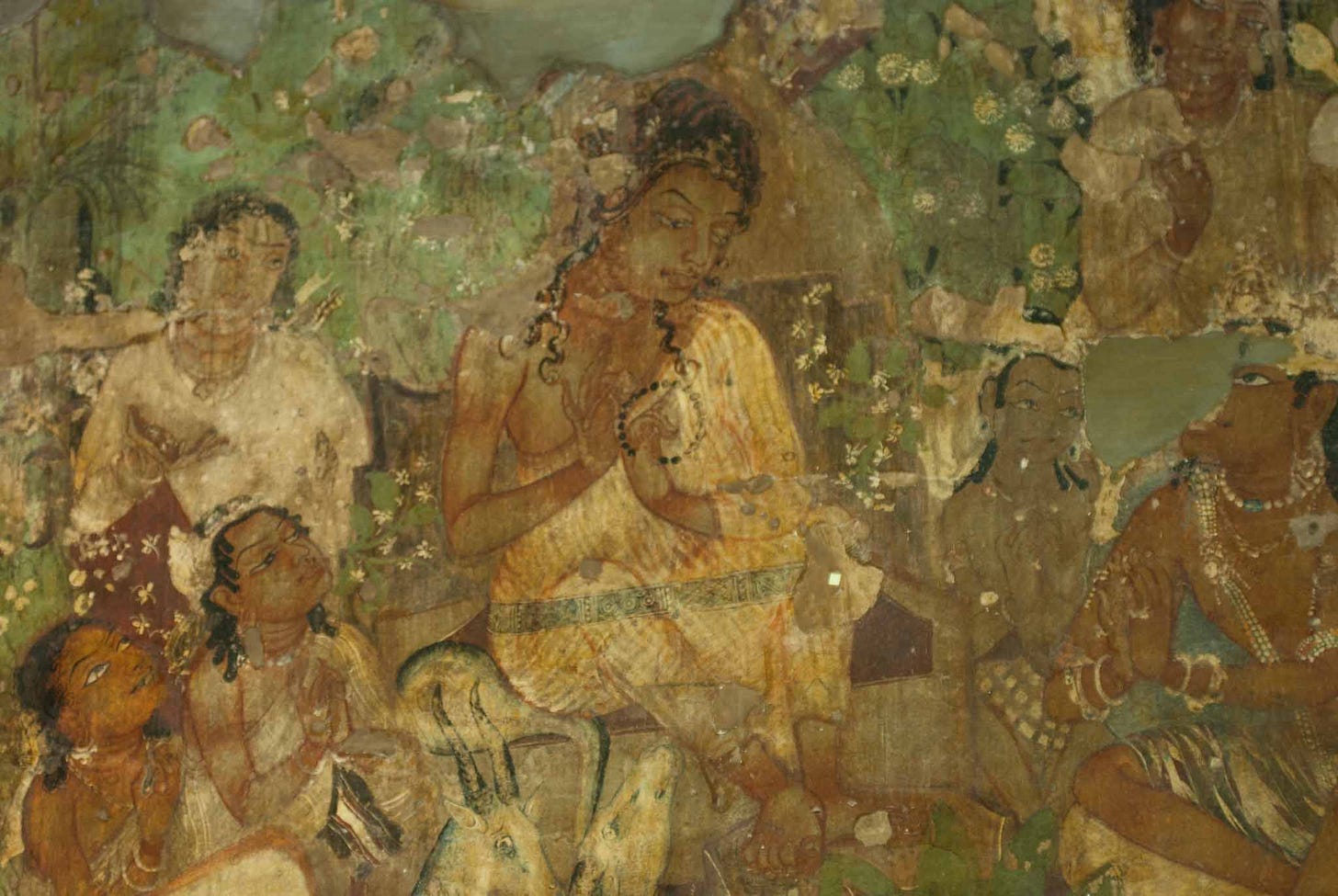
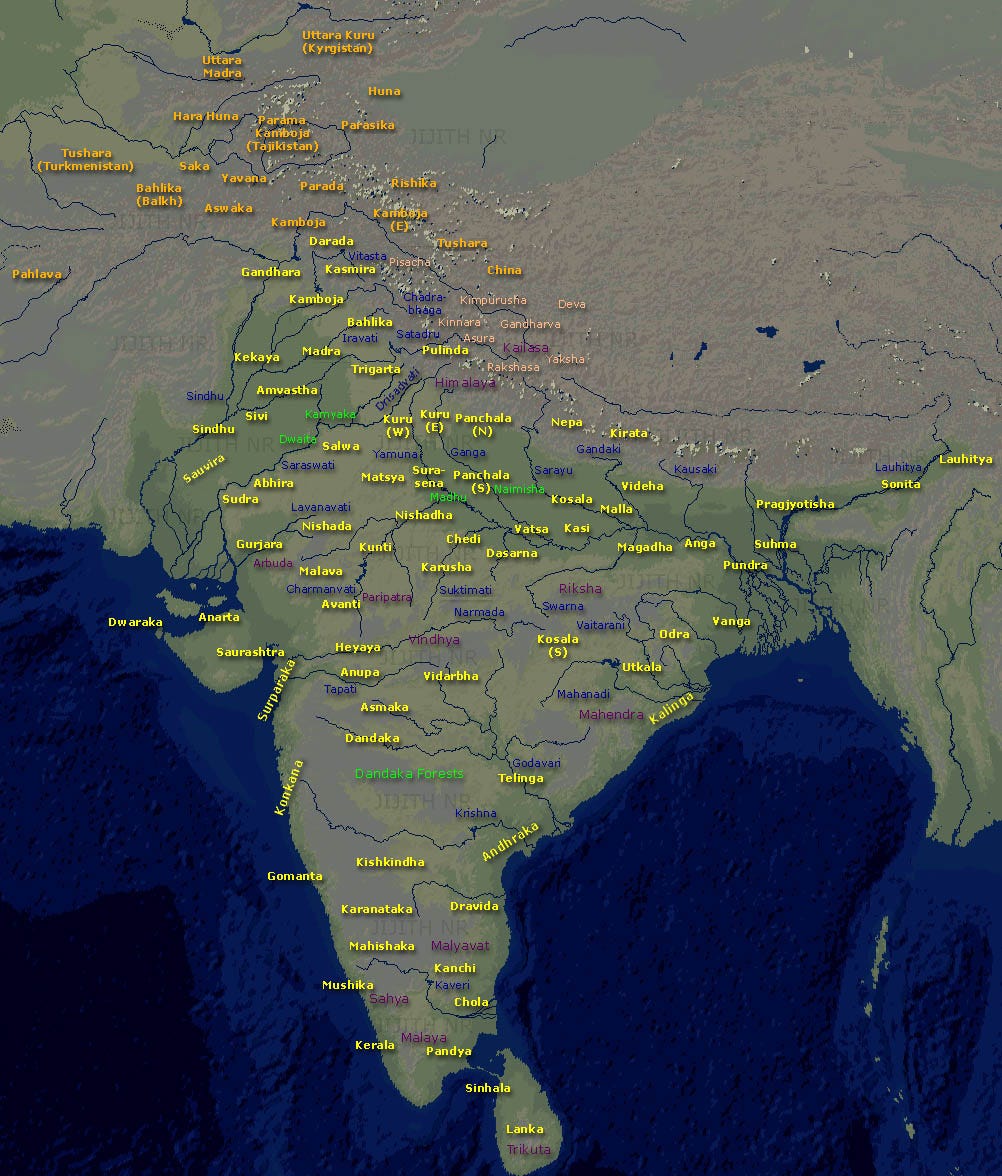
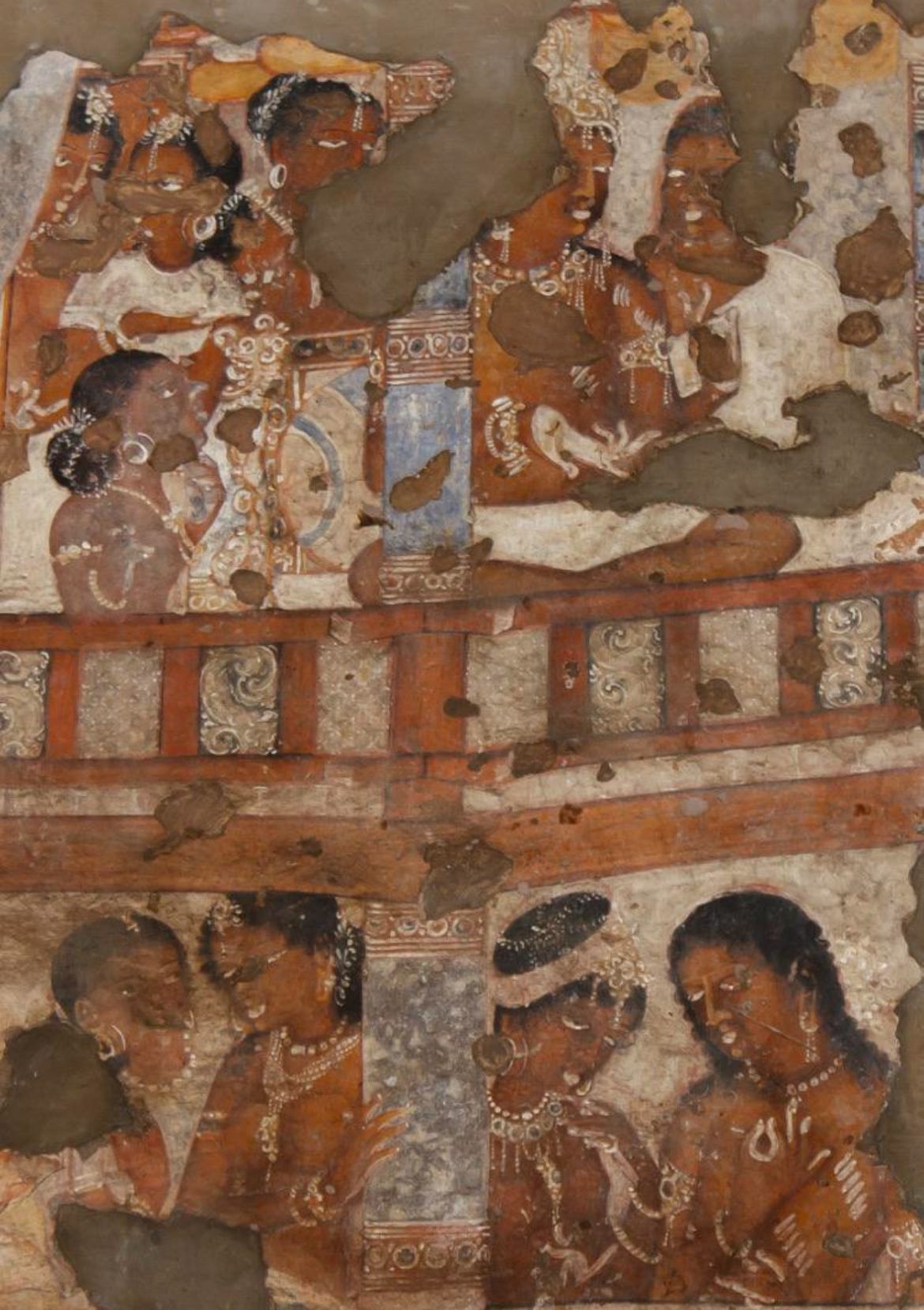

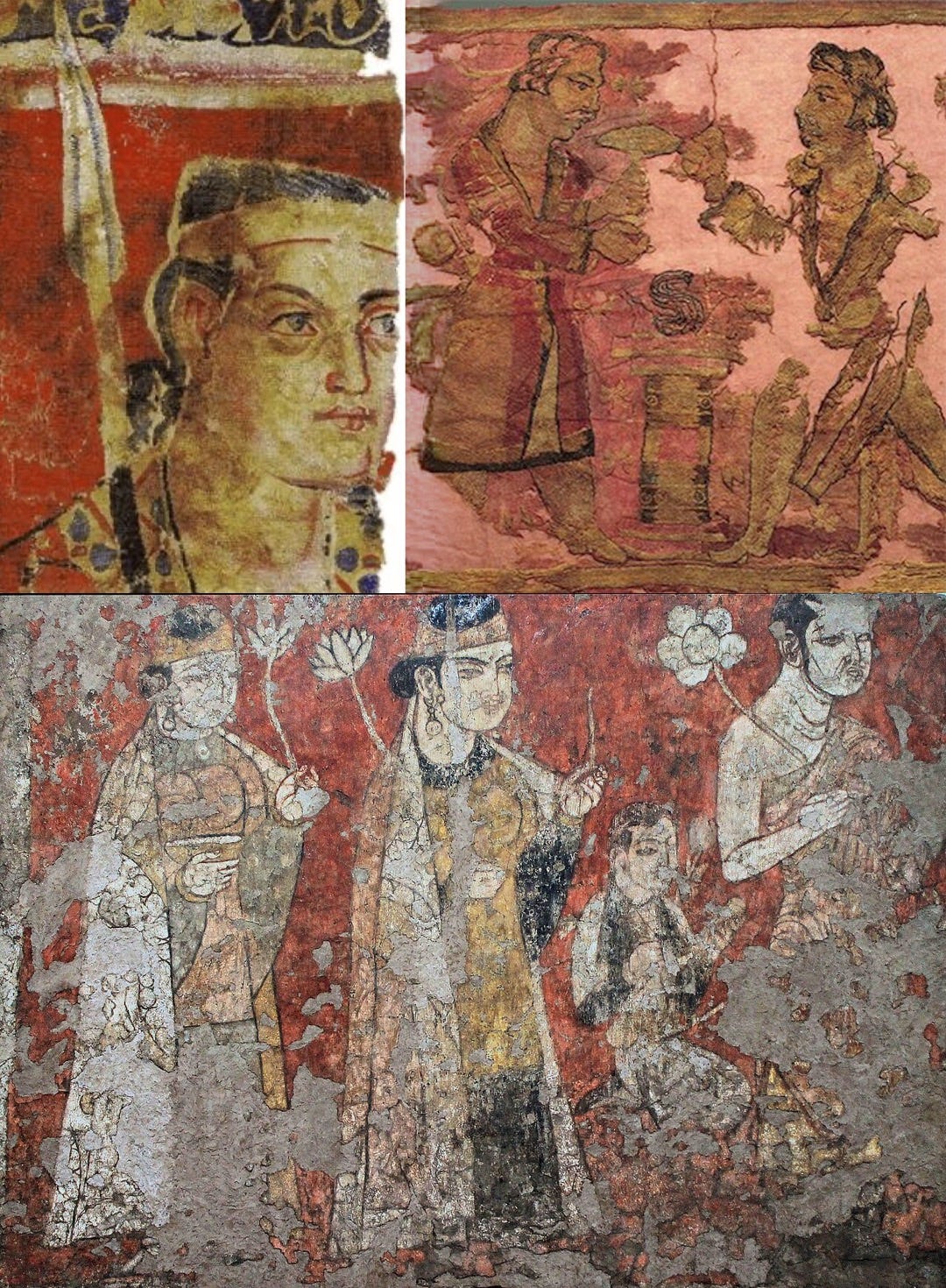
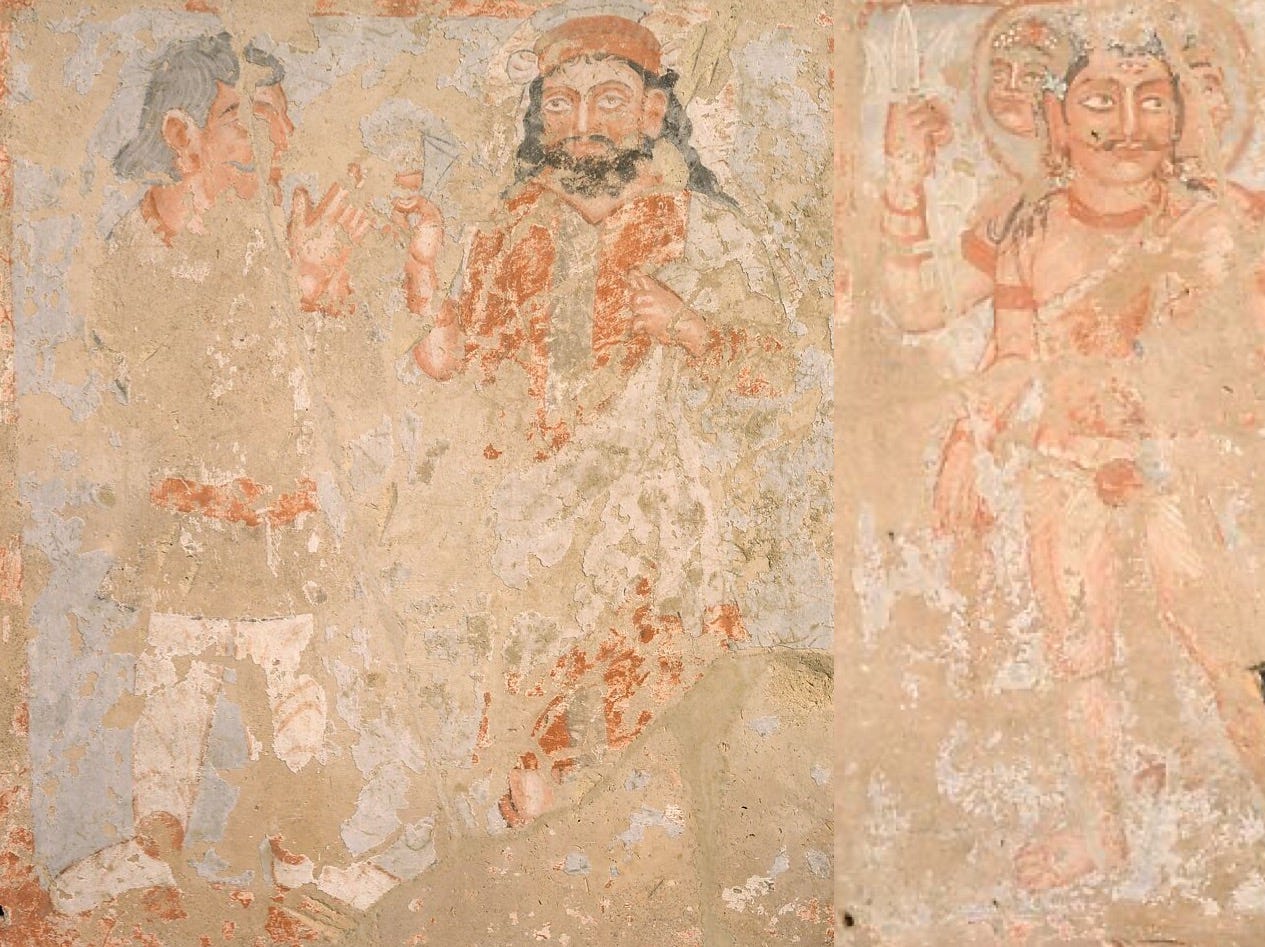
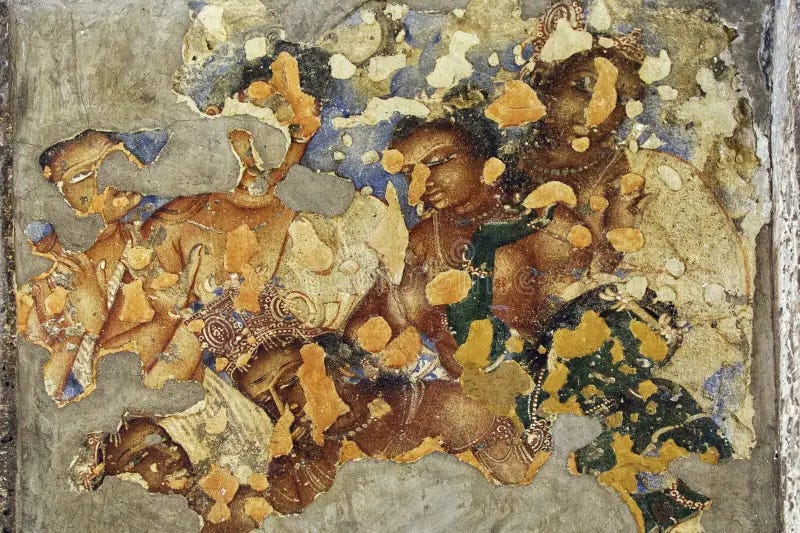
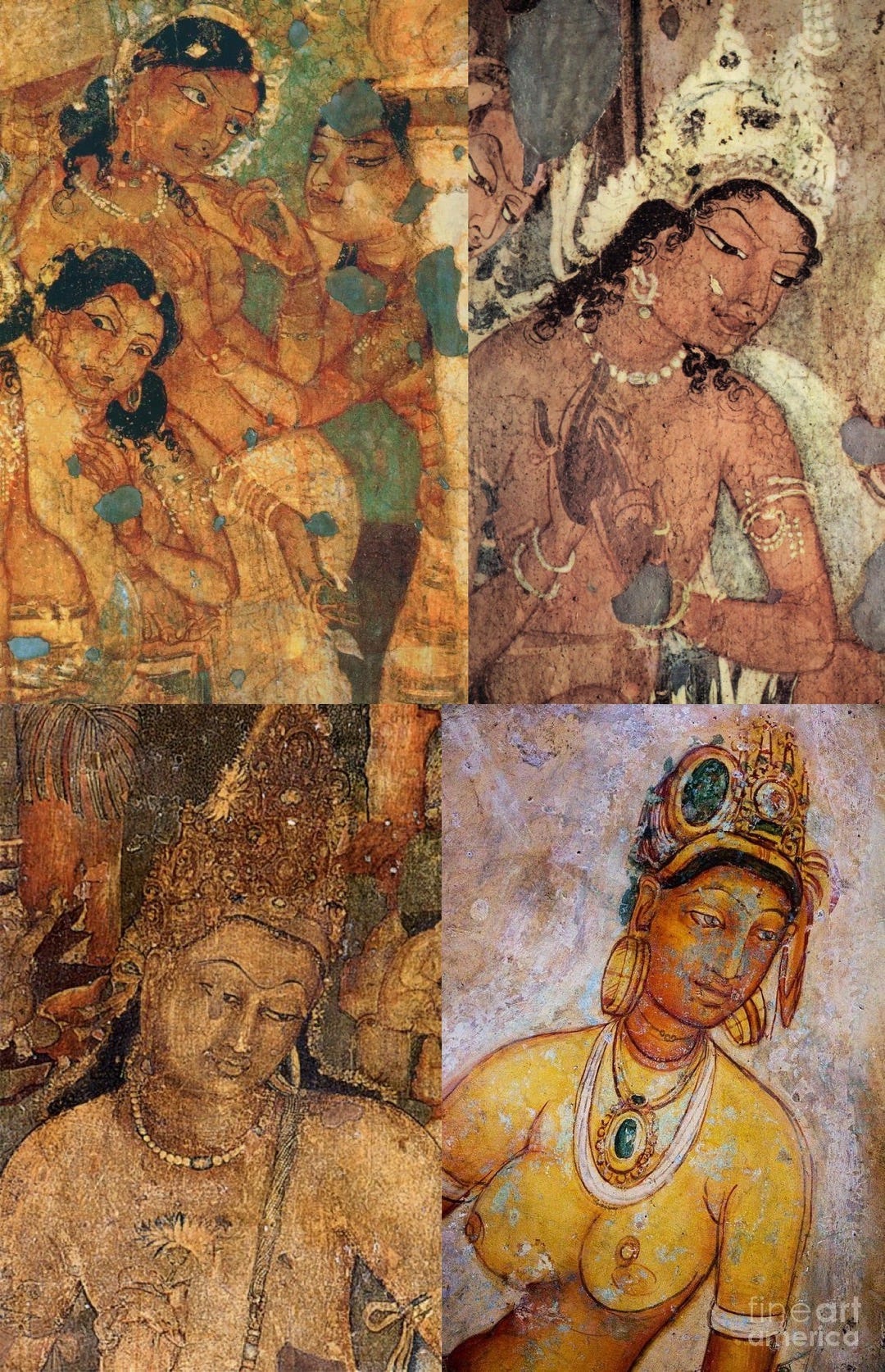
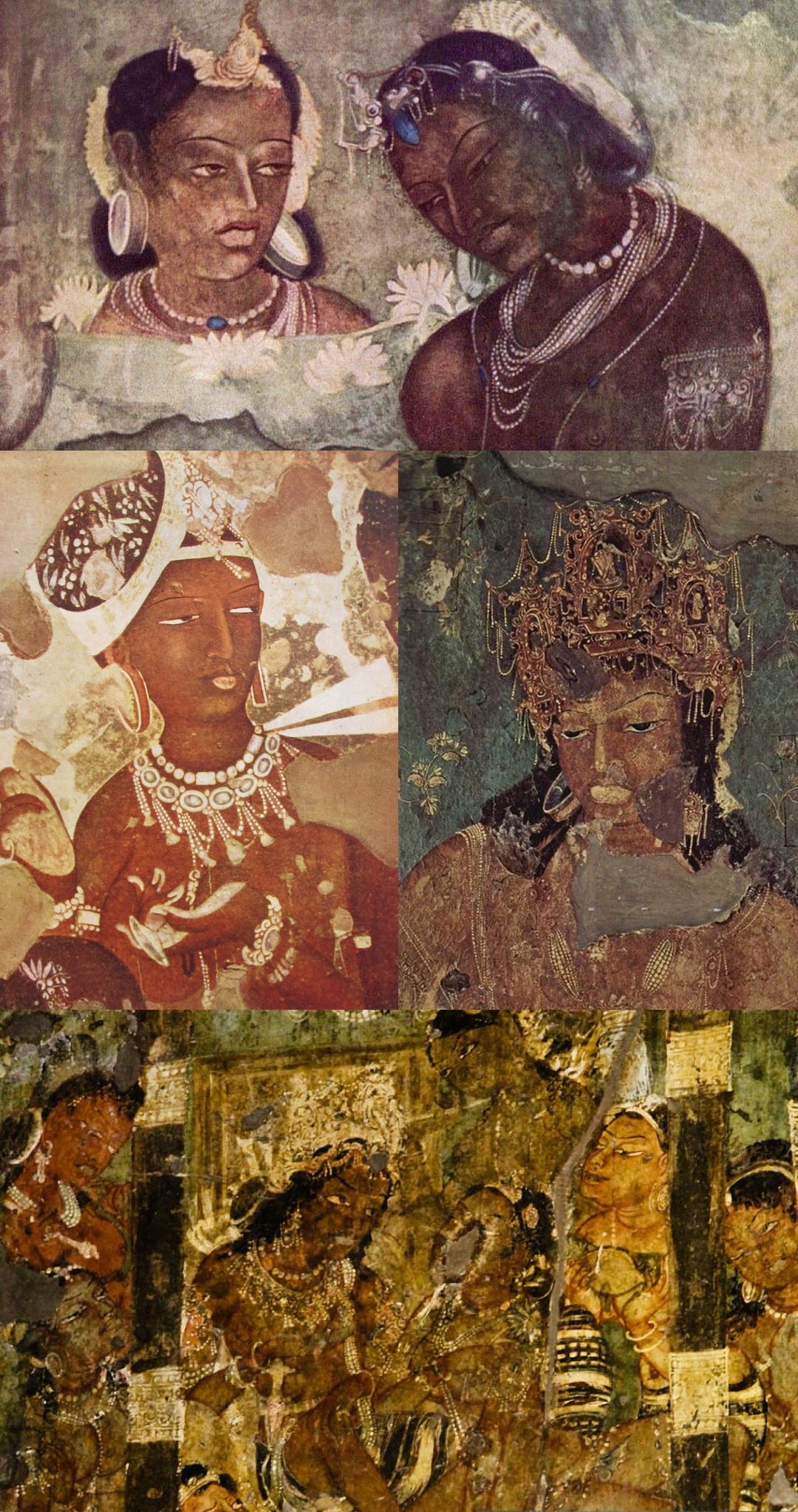
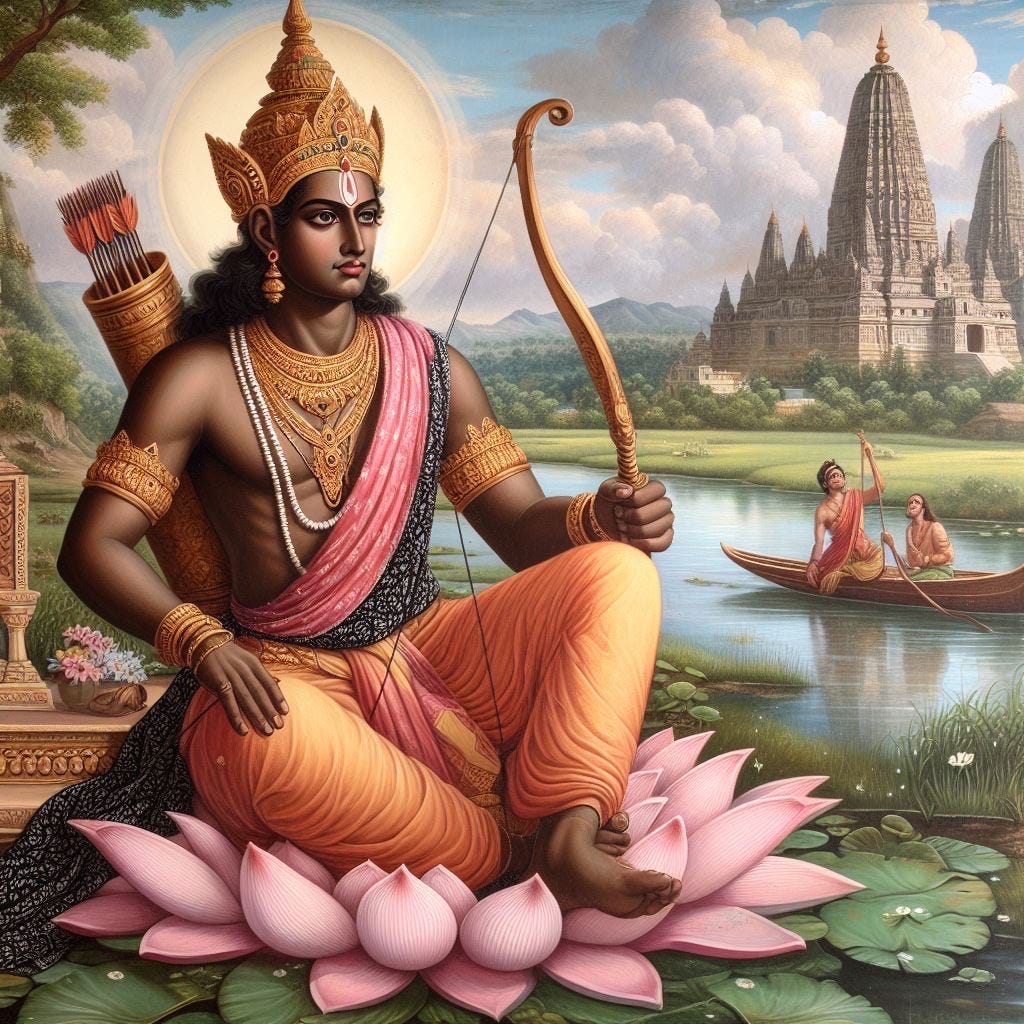
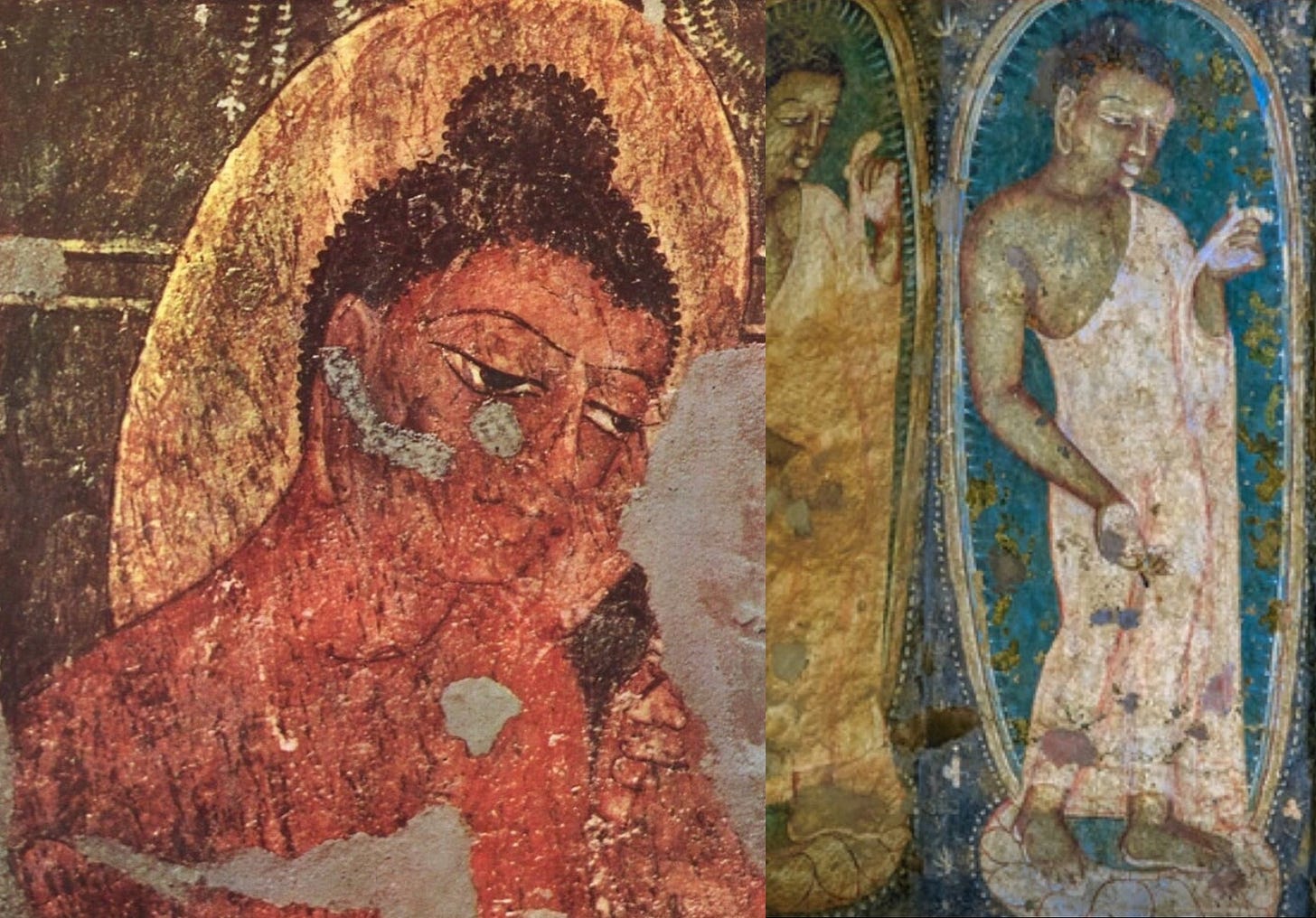
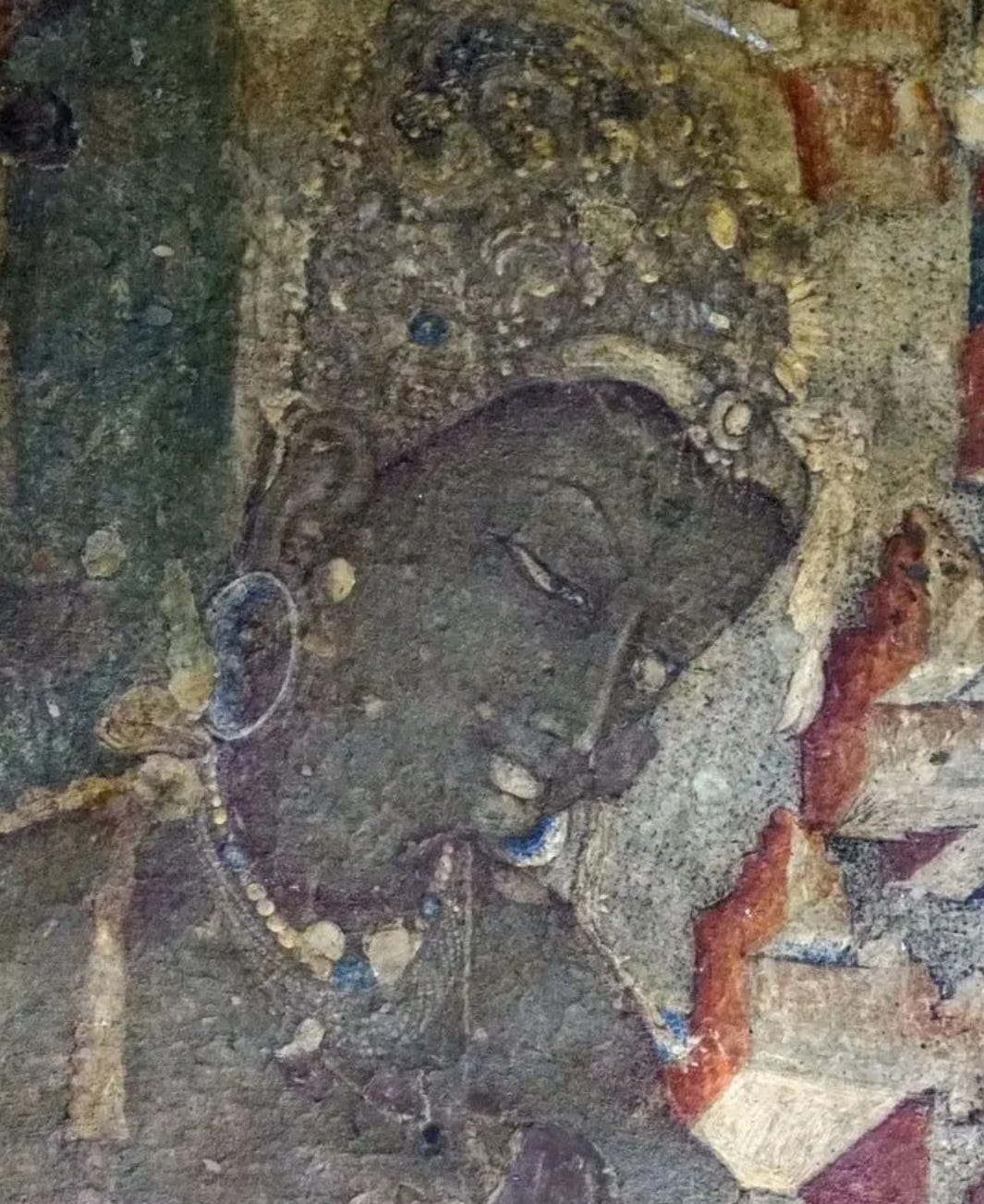

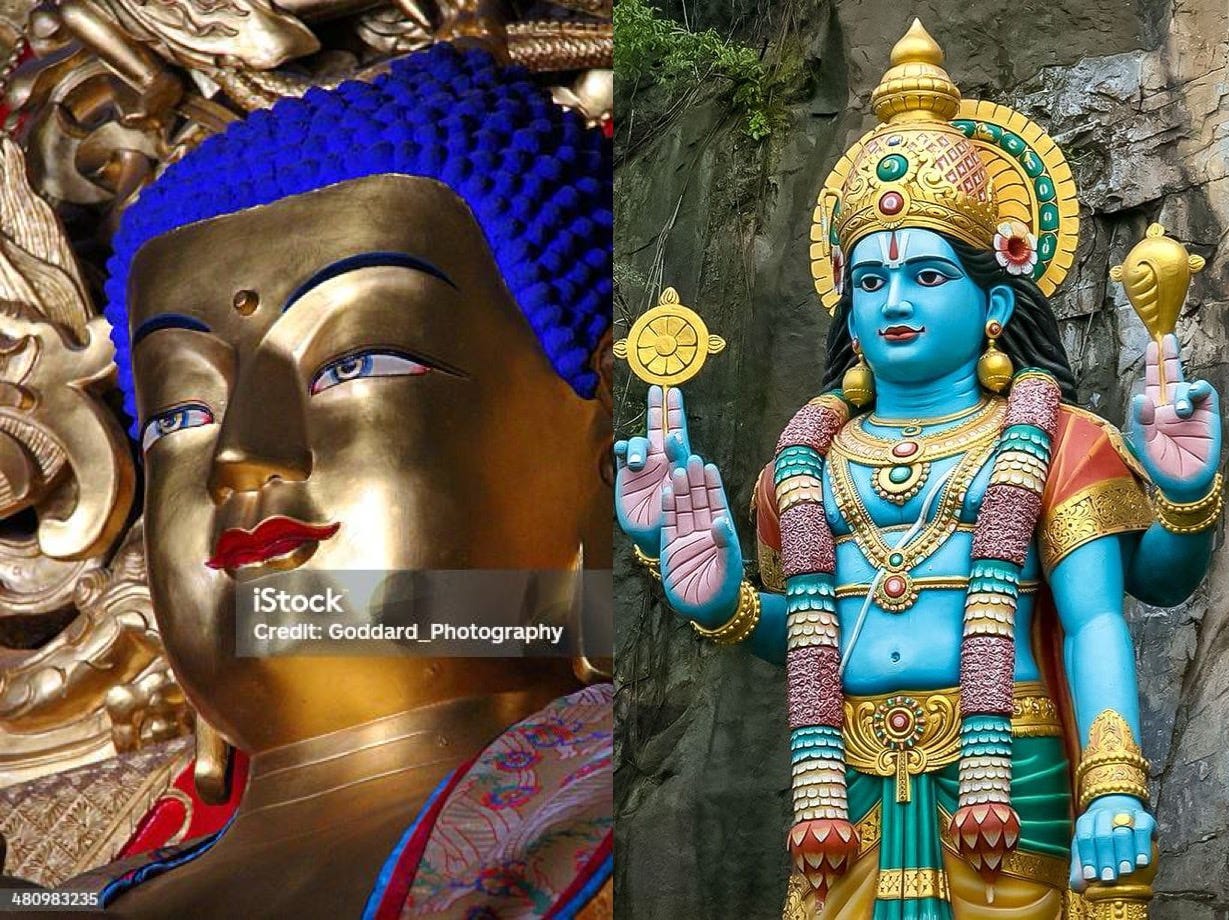
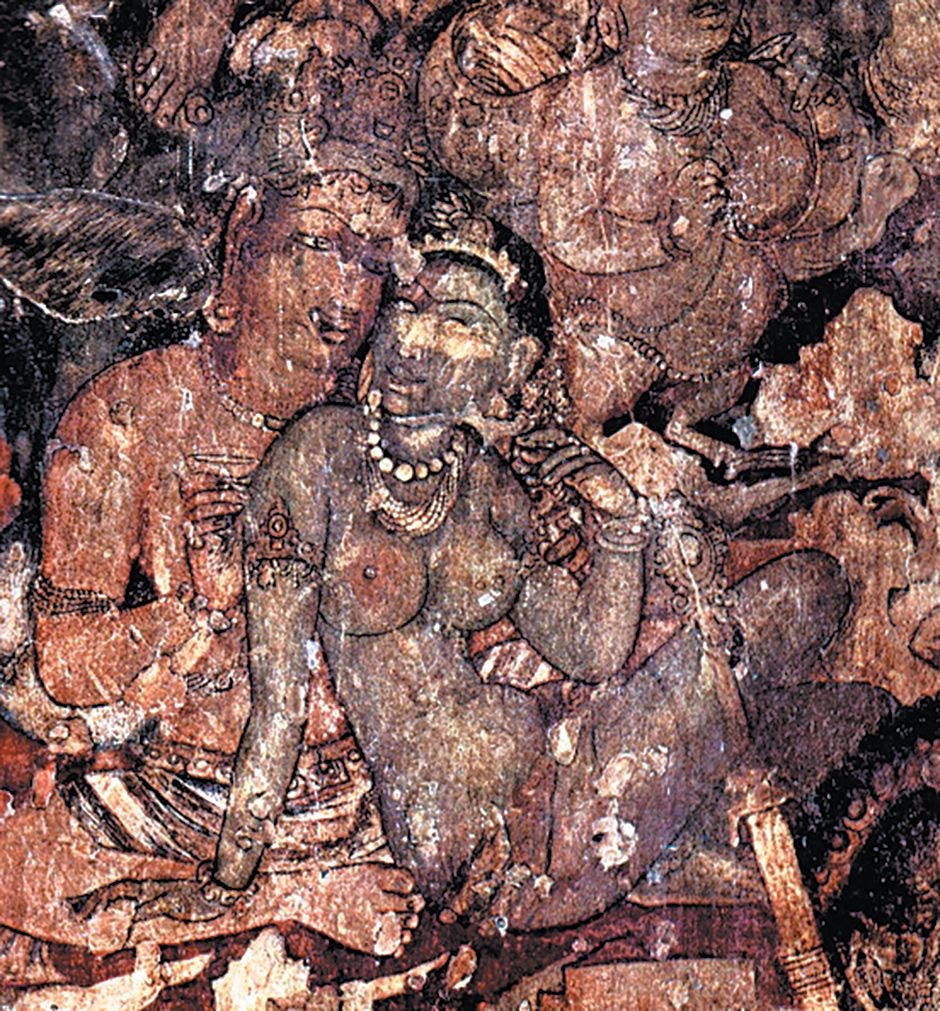
I love your pictures—how could I not have followed or connected yet?
🫠💛